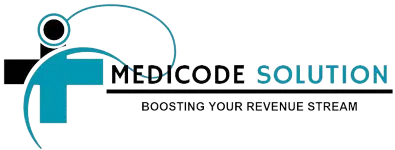Unlocking Revenue Cycle Management (RCM): Comprehensive Guide
Revenue Cycle Management (RCM) is the foundation of efficient and effective healthcare administration. This article provides a comprehensive look at RCM, focusing on its intricacies, processes, and the role of RCM companies in improving operational and financial outcomes for healthcare providers.
Table of Contents
- What is Revenue Cycle Management (RCM)?
- Key Components of RCM
- The RCM Process: Step-by-Step Breakdown
- Benefits of Optimized RCM
- Challenges in Revenue Cycle Management
- Technology’s Role in Modern RCM
- Future Trends in Revenue Cycle Management
- How to Improve RCM for Your Practice
- RCM in Different Healthcare Settings
Conclusion: Why RCM Matters
1. What is Revenue Cycle Management (RCM)?
RCM refers to the financial process healthcare organizations use to manage administrative and clinical functions related to patient service and revenue generation. It encompasses the identification, management, and collection of revenue from patient services, from initial scheduling to final payment.
Key Focus Areas of RCM:
Patient Registration: Accurate patient data collection.
Billing and Coding: Assigning proper codes for services provided.
Claim Submission: Ensuring claims meet payer requirements.
Payment Collection: Collecting co-pays, deductibles, and reimbursements.
2. Key Components of RCM
Effective RCM relies on several core components:
Patient Pre-registration: Collecting demographics and insurance details before services.
Insurance Eligibility Verification: Ensuring services are covered.
Medical Coding: Accurately translating services into billable codes.
Claim Submission and Management: Processing claims with minimal errors.
Payment Posting: Recording payments against claims.
Denial Management: Resolving denied claims promptly.
Patient Collections: Communicating and collecting balances from patients.
3. The RCM Process: Step-by-Step Breakdown
Patient Pre-Registration
Data collection before the appointment.
Verifying insurance and financial responsibilities.
Eligibility Verification
Confirming the patient’s insurance coverage.
Avoiding claim denials by verifying policy validity.
Service Documentation
Accurate charting of provided services.
Recording diagnoses and treatments.
Medical Coding and Charge Capture
Assigning standardized codes (CPT, ICD-10, HCPCS).
Capturing charges for all billable services.
Claim Submission
Preparing and submitting clean claims to insurers.
Ensuring timely submission to avoid delays.
Adjudication and Payment Posting
Monitoring claim statuses.
Posting payments and adjustments.
Denial Management
Identifying reasons for denials.
Resubmitting or appealing claims efficiently.
Patient Billing and Collections
Sending accurate invoices to patients.
Establishing flexible payment plans if necessary.
4. Benefits of Optimized RCM
Improved Cash Flow: Streamlined billing reduces delays.
Enhanced Patient Satisfaction: Transparent billing builds trust.
Regulatory Compliance: Staying compliant with healthcare laws.
Efficient Operations: Automation reduces administrative burdens.
5. Challenges in Revenue Cycle Management
Regulatory Changes: Constant updates in healthcare laws.
High Denial Rates: Errors in coding or claim submission.
Patient Responsibility Trends: Rising out-of-pocket expenses.
Staff Training: Keeping staff updated on billing procedures.
6. Technology’s Role in Modern RCM
Electronic Health Records (EHRs): Integrate clinical and financial data.
Artificial Intelligence (AI): Predict denial trends and automate processes.
Patient Portals: Enhance communication for billing and payments.
Analytics Tools: Provide insights into RCM performance.
7. Future Trends in Revenue Cycle Management
AI and Machine Learning: Revolutionizing predictive analytics in claims.
Blockchain Technology: Ensuring secure patient data and transactions.
Cloud-Based RCM Software: Enabling real-time data access.
Patient-Centric Billing Models: Enhancing patient engagement.
8. How to Improve RCM for Your Practice
Invest in Staff Training: Ensure staff understands the latest billing regulations.
Leverage Technology: Adopt robust RCM software for automation.
Monitor Metrics: Track key performance indicators like denial rates and collection timelines.
Outsource RCM: Collaborate with professional RCM vendors for better efficiency.
9. RCM in Different Healthcare Settings
Hospitals: Complex operations require advanced RCM systems.
Private Practices: Focused on patient satisfaction and collections.
Dental Practices: Unique billing codes and insurance requirements.
Specialty Clinics: Tailored RCM strategies for specific treatments.
10. Conclusion: Why RCM Matters
Revenue Cycle Management is critical for the financial health of any healthcare organization. By optimizing your RCM process, you can enhance cash flow, reduce operational inefficiencies, and focus on providing quality care. As the industry evolves, investing in technology and staying informed about trends will ensure long-term success.
Mastering RCM is not just about revenue; it’s about creating a seamless experience for patients and staff alike.

